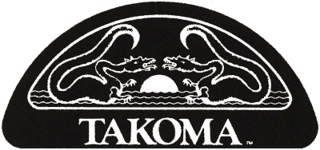
Takoma Records was a small but influential record label founded by guitarist John Fahey in the late 1950s. It was named after Fahey's hometown, Takoma Park, Maryland, a suburb of Washington, D.C.

The Transfiguration of Blind Joe Death is a 1965 album by American fingerstyle guitarist and composer John Fahey. Originally issued in a hand-lettered edition of 50, it was Fahey's first album to be released by a label other than his own Takoma Records. As with all of Fahey's independently released early albums, it had little critical recognition upon release. The album has grown in stature since its reissue on CD in 1997 and is now highly regarded critically. It was Fahey's fourth album to see release, though after his fifth album, The Great San Bernardino Birthday Party & Other Excursions, was labeled Guitar Vol. 4, reissues of The Transfiguration of Blind Joe Death were subtitled John Fahey, Volume 5.
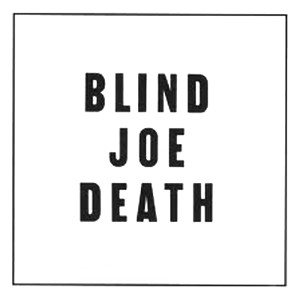
Blind Joe Death is the first album by American fingerstyle guitarist and composer John Fahey. There are three different versions of the album, and the original self-released edition of fewer than 100 copies is extremely rare.

John Aloysius Fahey was an American fingerstyle guitarist and composer who played the steel-string acoustic guitar as a solo instrument. His style has been enormously influential and has been described as the foundation of the genre of American primitive guitar, a term borrowed from painting and referring mainly to the self-taught nature of the music and its minimalist style. Fahey borrowed from the folk and blues traditions in American roots music, having compiled many forgotten early recordings in these genres. He would later incorporate 20th-century classical, Portuguese, Brazilian, and Indian influences into his work.
William Henry Barth was an American blues guitarist who, along with John Fahey and Henry Vestine, located 1930s blues great Skip James in a hospital in Tunica, Mississippi in 1964.

The Voice of the Turtle is the seventh album by American guitarist John Fahey. Recorded and released in 1968, it is considered one of his more experimental albums, combining not only folk elements, but shreds of psychedelia, early blues, country fiddles, ragas, and white noise. The album had many reissues with various track listings, jacket designs and mismatched titles.

Denny Bruce is an American record producer and artist manager. He produced over 60 albums, and managed and produced albums by John Fahey, The Fabulous Thunderbirds, Leo Kottke, John Hiatt and many others over his 50 year career in the music business.

The Yellow Princess is the ninth album by American folk musician John Fahey. Released in 1968, it was his second and last release on the Vanguard label.

Death Chants, Breakdowns & Military Waltzes is a 1963 album by American fingerstyle guitarist and composer John Fahey. Various sources show either a 1963 or 1964 original release. It was Fahey's second release and the first to gain a national distributor.

Fare Forward Voyagers (Soldier's Choice) (or simply, Fare Forward Voyagers) is an album by American fingerstyle guitarist and composer John Fahey, released in 1973. It contains three songs, one comprising a complete side of the original LP.
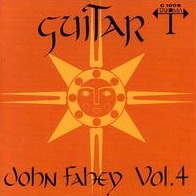
The Great San Bernardino Birthday Party & Other Excursions is an album by American fingerstyle guitarist and composer John Fahey, released in 1966. The cover simply labels the album Guitar Vol. 4 while the liner notes label it The Great San Bernardino Birthday Party & Other Excursions. The title never appeared on the record labels themselves. It marked the beginning of Fahey's interest in his recording of experimental soundscapes and sound effects. Despite Fahey's distaste for the 1960s counterculture, it is his release most often referred to as psychedelic.

Requia is the eighth album by American fingerstyle guitarist and composer John Fahey. Released in November 1967, it was the first of Fahey's two releases on the Vanguard label. It originally received hostile reviews from music critics, particularly for its musique concrète experimentation. It has since been recognised as precursor to new-age music, and has been re-released multiple times, including by Terra in 1985, Vanguard in 1997 and 1998 and Ace in 1998.

America is an album by American folk musician John Fahey, released in 1971. Originally intended to be a double album, it was released as a single LP. The unreleased material was subsequently restored in later CD and vinyl reissues.

The Best of John Fahey 1959–1977 is a compilation album by American fingerstyle guitarist and composer John Fahey, released in 1977. The songs are collected from four of Fahey's dozen or so releases up to that point.

John Fahey Visits Washington D.C. is an album by American fingerstyle guitarist and composer John Fahey, released in 1979.

Railroad is an album by American fingerstyle guitarist and composer John Fahey, released in 1983. It was originally released as Railroad 1 by mistake. The Shanachie Records reissue is correctly labeled as Railroad. It was his last principal recording for Takoma Records, the label he founded in 1959.

Georgia Stomps, Atlanta Struts and Other Contemporary Dance Favorites is a live album by American fingerstyle guitarist and composer John Fahey, released in 1998. It was the second and last live album he recorded and released during his lifetime.
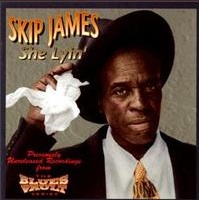
She Lyin' is the second studio album by American blues singer Skip James, recorded in 1964 and released in 1993. It was originally recorded for Takoma Records and was James' first recording since his rediscovery in 1964.
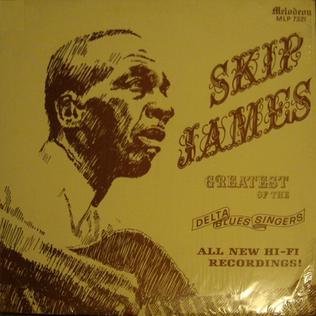
Greatest of the Delta Blues Singers is the debut album by the American blues singer Skip James, released in 1965. It was his first album released after his rediscovery in 1964.

Your Past Comes Back to Haunt You: The Fonotone Years, 1958–1965 is the title of a box set compilation of recordings by American fingerstyle guitarist and composer John Fahey, released in 2011.




















